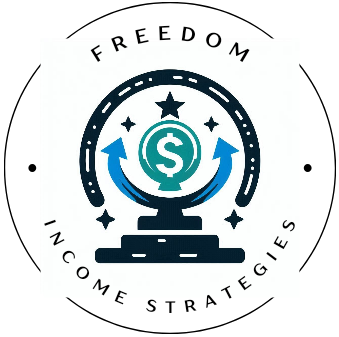Starting a blog is an exciting venture that can open doors to creativity, income, and even a full-time career. However, setting the foundation right is crucial for long-term success, and it all begins with making a few key decisions that will impact your blog’s performance and your overall experience.
1. Choosing the Right Blogging Platform
The blogging platform you choose plays a huge role in how much fun and success you’ll have along the way. Options like WordPress, Blogger, or Wix each come with their own set of pros and cons, but WordPress often gets the nod for flexibility and scalability. WordPress offers thousands of themes and plugins, allowing you to build your site exactly how you want it. If you’re planning to scale your blog into a business, WordPress will likely be your best option.
2. Selecting a Profitable Niche
Selecting a profitable niche can seem tricky, but it doesn’t have to be stressful. The best advice is to choose something you’re passionate about and something that already has an audience. Popular topics like personal finance, health, and technology often attract large audiences, making them great choices for monetization. It’s important to balance your passion with a niche that has demand. Do some research to see what’s trending and what people are curious about. Tools like Google Trends and BuzzSumo can be helpful in this regard.
3. Essential Tools and Plugins
Once you’ve decided on your niche and platform, it’s time to add essential tools and plugins to make your blog functional and user-friendly. If you’re using WordPress, here are a few must-have plugins to get started:
- Yoast SEO: Helps optimize your blog for search engines, ensuring that your posts are SEO-friendly.
- Akismet: A powerful tool for controlling spam in your comment sections.
- Jetpack: Offers a range of services, including site security, backups, and performance enhancements.
These plugins will help your blog run smoothly while improving its performance and visibility.
4. Setting Up Hosting and Domain Name
Setting up your hosting and domain name is a non-negotiable step when creating a blog. Hosting services like Bluehost, SiteGround, and HostGator offer reliable hosting and domain registration services, making it easy to set up your site. Your domain name is your brand, so it should be catchy, memorable, and related to your niche. Make sure it’s something people can easily recall, as this will help with traffic generation and word-of-mouth promotion.
Alternatively, Wealthy Affiliate offers not only hosting but also a complete suite of resources to help you learn, grow, and manage your blog effortlessly.
5. Designing an Appealing Blog Layout
Think of your blog layout as the digital version of decorating a room. It should be neat, welcoming, and reflective of your blog’s personality. Both aesthetics and functionality matter. While there are numerous free and premium themes available, it’s crucial to choose one that is easy to navigate and mobile-friendly. Since a significant portion of web traffic comes from mobile devices, ensuring that your blog is mobile-optimized will improve user experience and reduce bounce rates.
Creating High-Quality Content
Once your blog is set up, it’s time to focus on content creation. High-quality content is what will attract and retain readers. This step is critical, as content is king in the blogging world.
- Understand Your Target Audience
You need to know who you’re writing for. What are their interests? What challenges are they facing? By understanding your target audience’s pain points and desires, you can tailor your content to provide solutions. Creating reader personas is a helpful way to stay focused on what your audience needs. - Generating Content Ideas
One of the toughest aspects of blogging is coming up with fresh and engaging content ideas. Keep a notebook or digital document handy to jot down ideas as they come. You can also use tools like Google Trends and AnswerThePublic to discover trending topics that align with your niche. - Crafting Engaging Headlines
Your headline is the first thing people see, so make sure it’s catchy and relevant. A well-crafted headline will grab attention and compel readers to click on your post. Use techniques such as including numbers, asking questions, or using emotionally charged words to boost engagement. - Writing Informative Blog Posts
The actual content of your post should be clear, concise, and authentic. Share personal experiences, back up your claims with data or expert opinions, and offer actionable advice. Engaging and informative posts will keep readers coming back for more. - Incorporating Visuals and Multimedia
Using high-quality images, videos, infographics, and even memes can break up large chunks of text and make your content more engaging. Visuals not only enhance the reading experience but also improve SEO, as images can be optimized with alt tags for better search engine rankings.
Growing Your Audience and Building Community

Creating quality content is just the beginning. Growing your audience and building a community around your blog requires ongoing effort.
- Utilize Social Media for Promotion
Platforms like Instagram, Twitter, Facebook, and Pinterest are excellent tools for promoting your blog posts. Consistency is key here—schedule regular posts and interact with your followers to build rapport. Tools like Buffer or Hootsuite can help streamline your social media scheduling. - Build an Email List
Having an email list allows you to stay in touch with your audience directly. Use opt-in forms and offer freebies like e-books or exclusive content to incentivize sign-ups. Then, engage your list with regular newsletters, offering tips, blog updates, and even exclusive offers. - Engage With Your Readers
Responding to comments and feedback on your blog or social media helps build a community. When readers see that you value their opinions, they’re more likely to become loyal followers. Building relationships fosters long-term engagement. - Collaborate With Other Bloggers and Influencers
Collaborating with others in your niche can introduce your blog to a wider audience. Consider guest posting, doing joint giveaways, or shout-outs. Networking in the blogging community can accelerate your growth.
Monetizing Your Blog
Once your blog starts gaining traction, it’s time to think about monetization. There are various ways to turn your blog into a revenue-generating machine:
- Affiliate Marketing
Affiliate marketing is a popular way to earn passive income. By promoting products or services relevant to your niche, you can earn a commission on each sale generated through your referral links. - Sponsored Posts
As your blog grows, brands may approach you for sponsored content. In exchange for payment, you can write about their products or services, exposing your audience to new offerings. - Display Ads
Platforms like Google AdSense allow you to display ads on your blog, earning money based on the number of impressions or clicks. While ads might not generate massive income initially, they can provide a steady stream of revenue over time. - Creating and Selling Digital Products
Creating your own digital products like e-books, online courses, or printables can be a great way to monetize your blog. These products leverage your expertise and can offer high margins with little ongoing effort once created. - Offering Services and Consultations
If you’re an expert in your field, offering consultations, coaching, or freelance services can be another lucrative option. Your blog acts as a portfolio, showcasing your expertise to potential clients.
Finally, it’s important to diversify your income streams. Relying on just one monetization method can be risky, so mix and match different strategies to create a steady, reliable income.
Wrapping It Up
Starting a blog can lead to amazing opportunities, whether you’re looking for a creative outlet, a side hustle, or even a full-time gig. By choosing the right platform, focusing on a niche you’re passionate about, and using the right tools, you’re already setting yourself up for success. Creating valuable content, engaging with your readers, and steadily growing your audience are the building blocks of a thriving blog. As your blog grows, you’ll have plenty of ways to turn it into a source of income. Whether it’s through affiliate marketing, sponsored posts, or selling your own digital products, the possibilities are endless. Just remember, blogging is a long-term game—stay consistent, keep learning, and most importantly, have fun with it. Your blog could be the start of something great!

